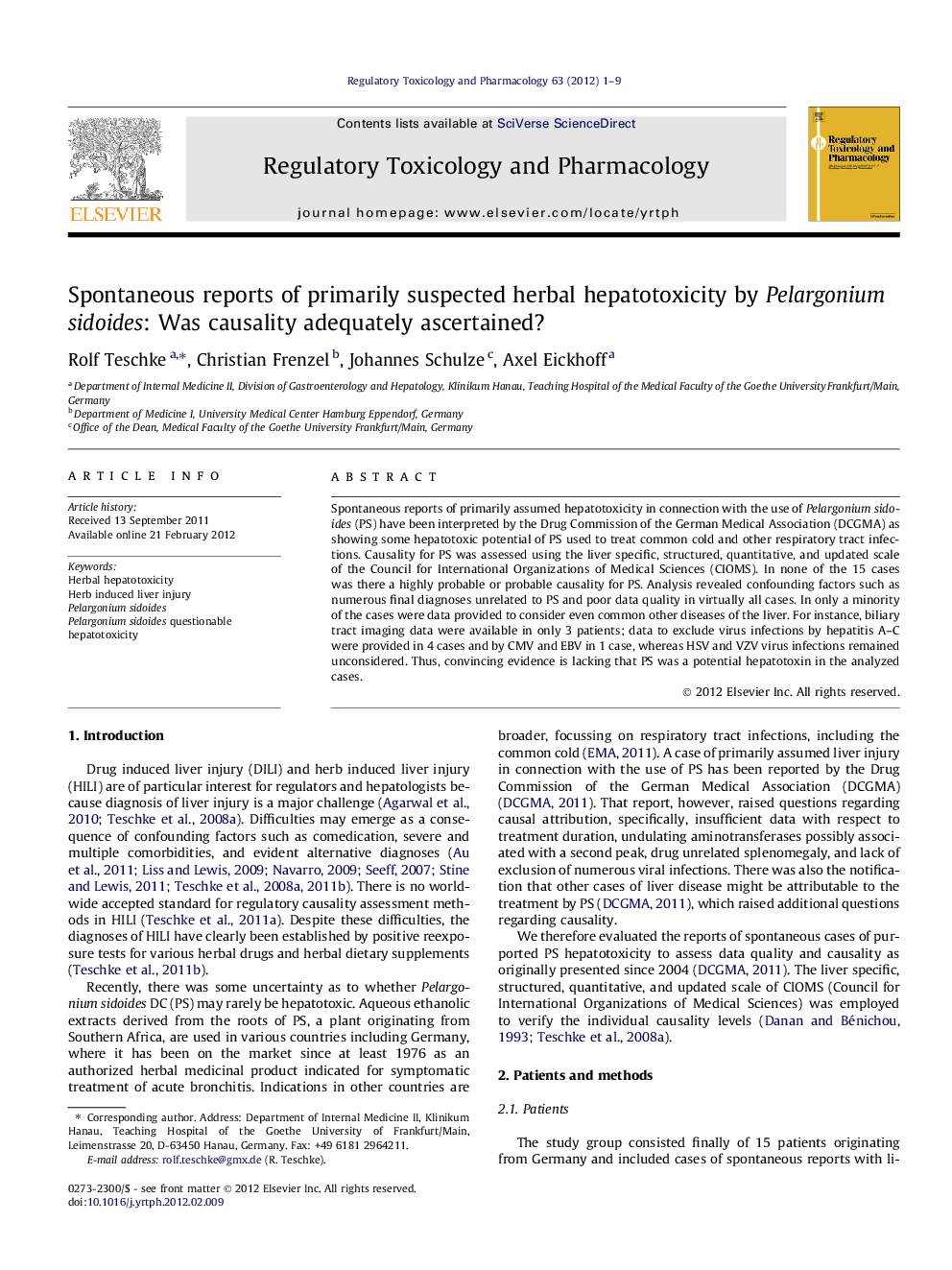| Article ID | Journal | Published Year | Pages | File Type |
|---|---|---|---|---|
| 5857227 | Regulatory Toxicology and Pharmacology | 2012 | 9 Pages |
Spontaneous reports of primarily assumed hepatotoxicity in connection with the use of Pelargonium sidoides (PS) have been interpreted by the Drug Commission of the German Medical Association (DCGMA) as showing some hepatotoxic potential of PS used to treat common cold and other respiratory tract infections. Causality for PS was assessed using the liver specific, structured, quantitative, and updated scale of the Council for International Organizations of Medical Sciences (CIOMS). In none of the 15 cases was there a highly probable or probable causality for PS. Analysis revealed confounding factors such as numerous final diagnoses unrelated to PS and poor data quality in virtually all cases. In only a minority of the cases were data provided to consider even common other diseases of the liver. For instance, biliary tract imaging data were available in only 3 patients; data to exclude virus infections by hepatitis A-C were provided in 4 cases and by CMV and EBV in 1 case, whereas HSV and VZV virus infections remained unconsidered. Thus, convincing evidence is lacking that PS was a potential hepatotoxin in the analyzed cases.
⺠Extracts of Pelargonium sidoides (PS) roots are used to treat respiratory infections. ⺠In Germany, spontaneous cases of assumed PS hepatotoxicity created concern. ⺠In none of the 15 analyzed cases PS causality was now highly probable or probable. ⺠Confounding variables included numerous PS unrelated diagnoses and poor data quality. ⺠The analyzed cases showed lack of convincing evidence that PS may be hepatotoxic.
